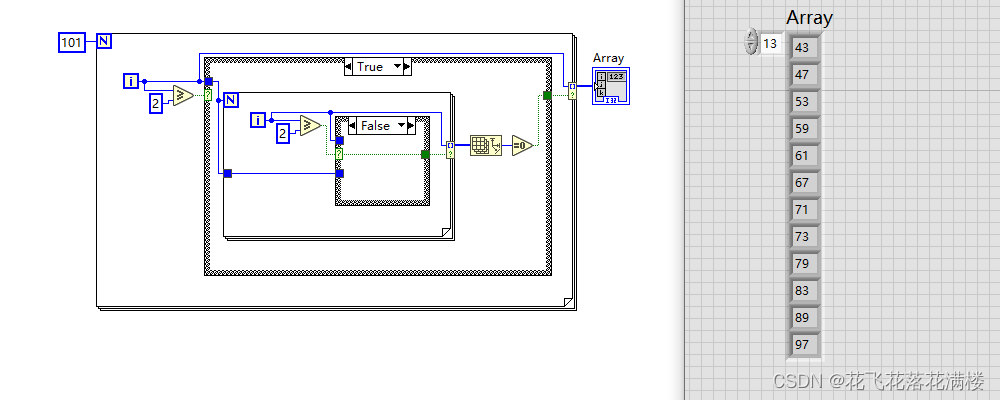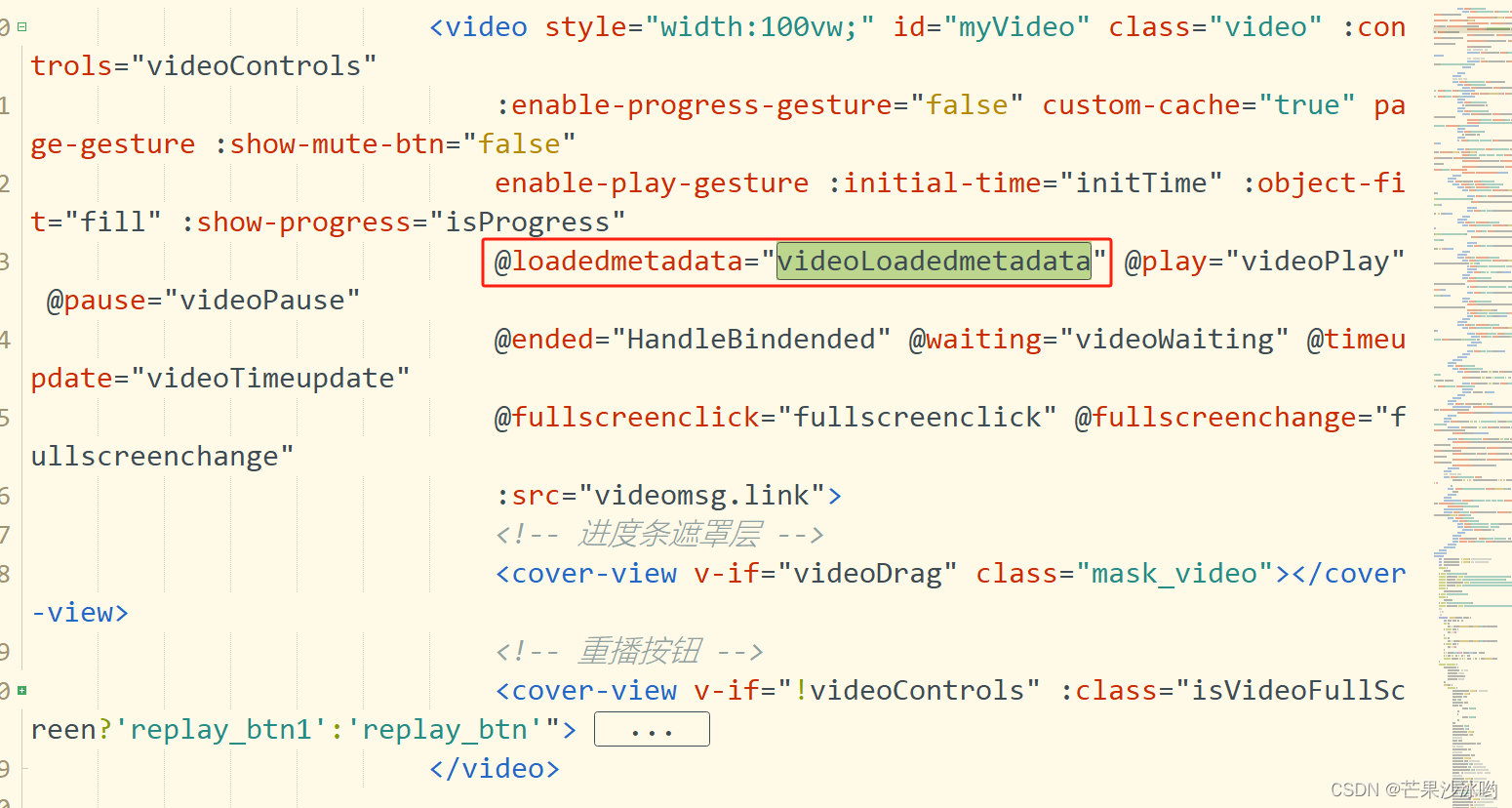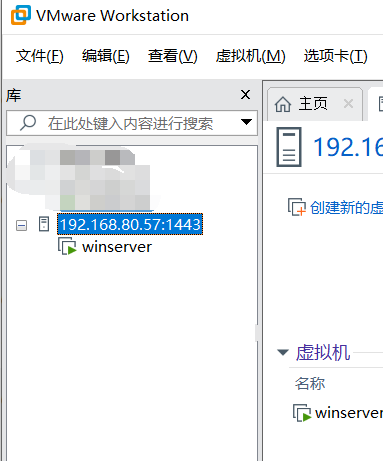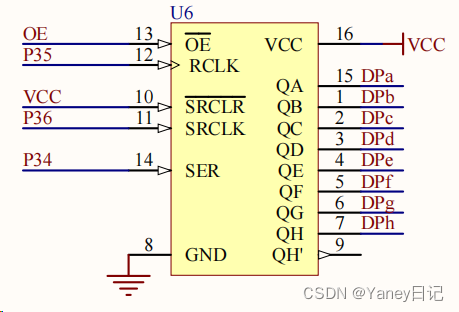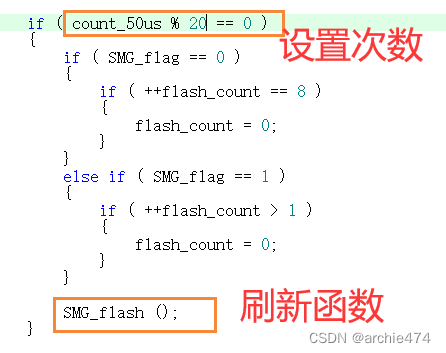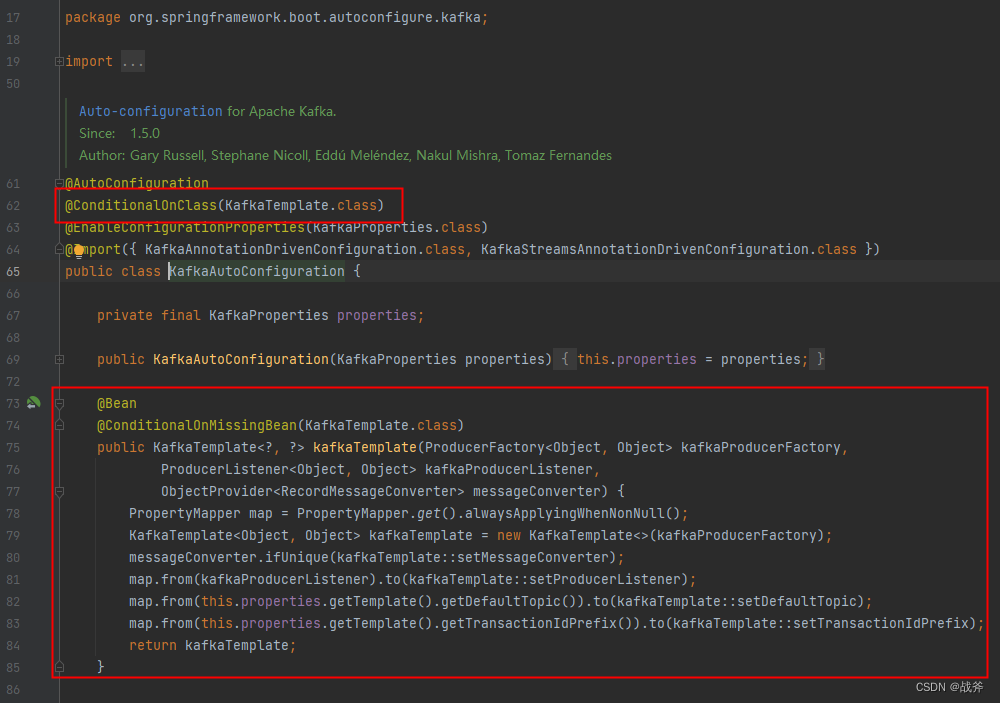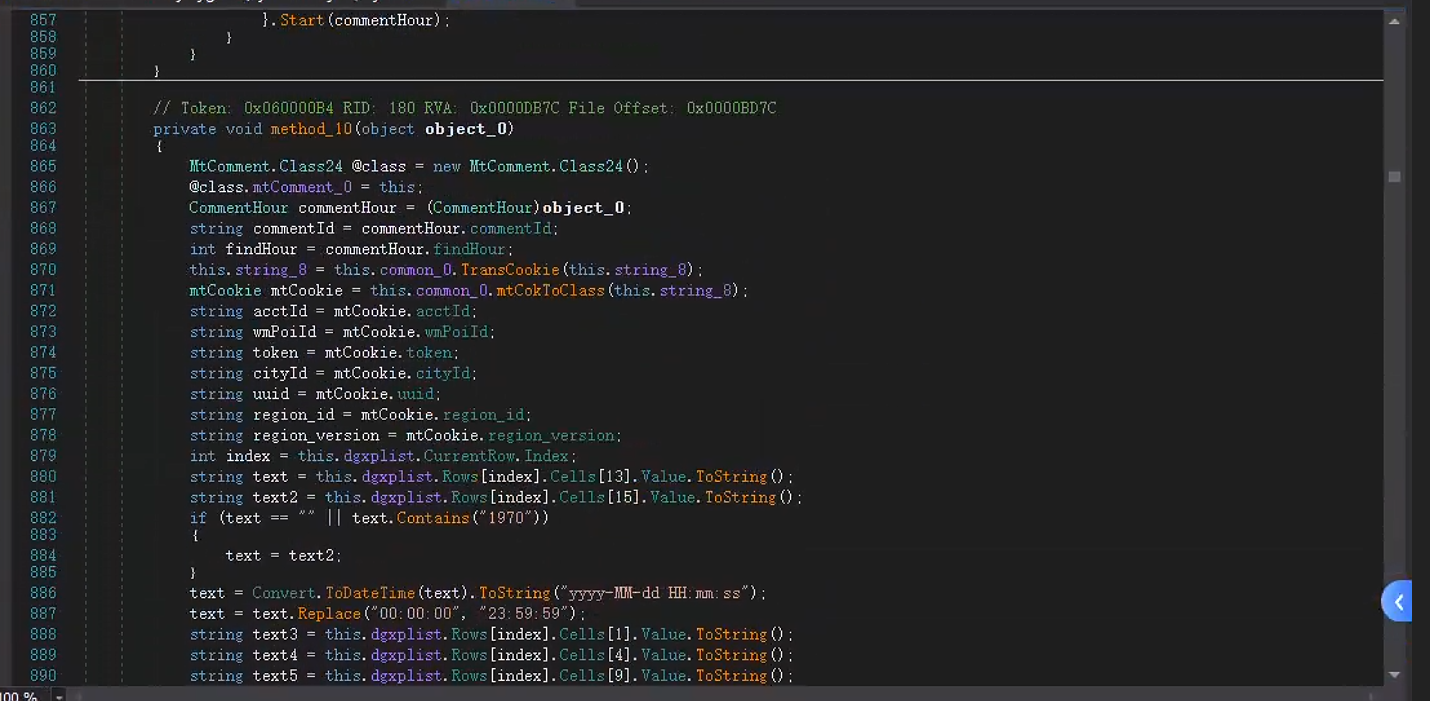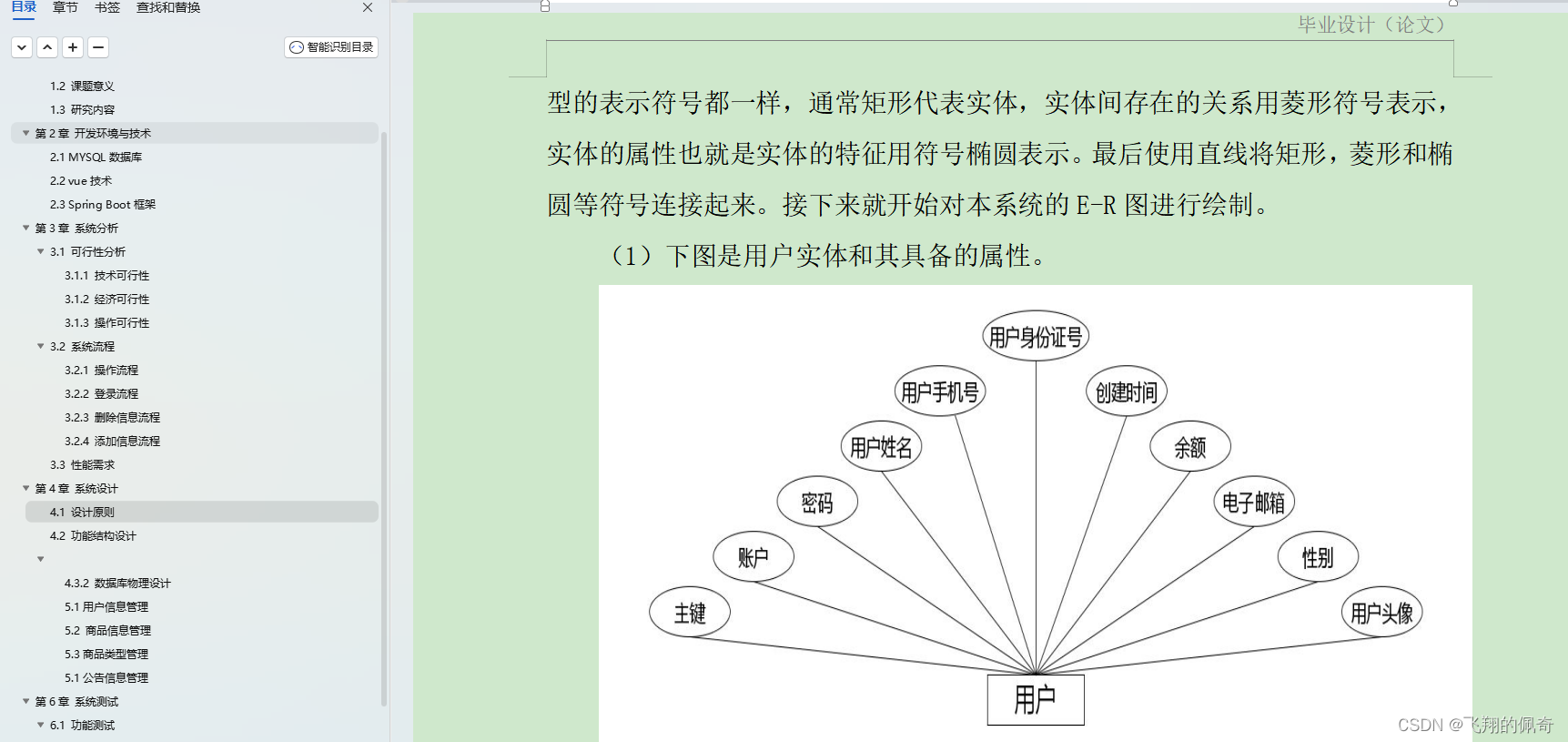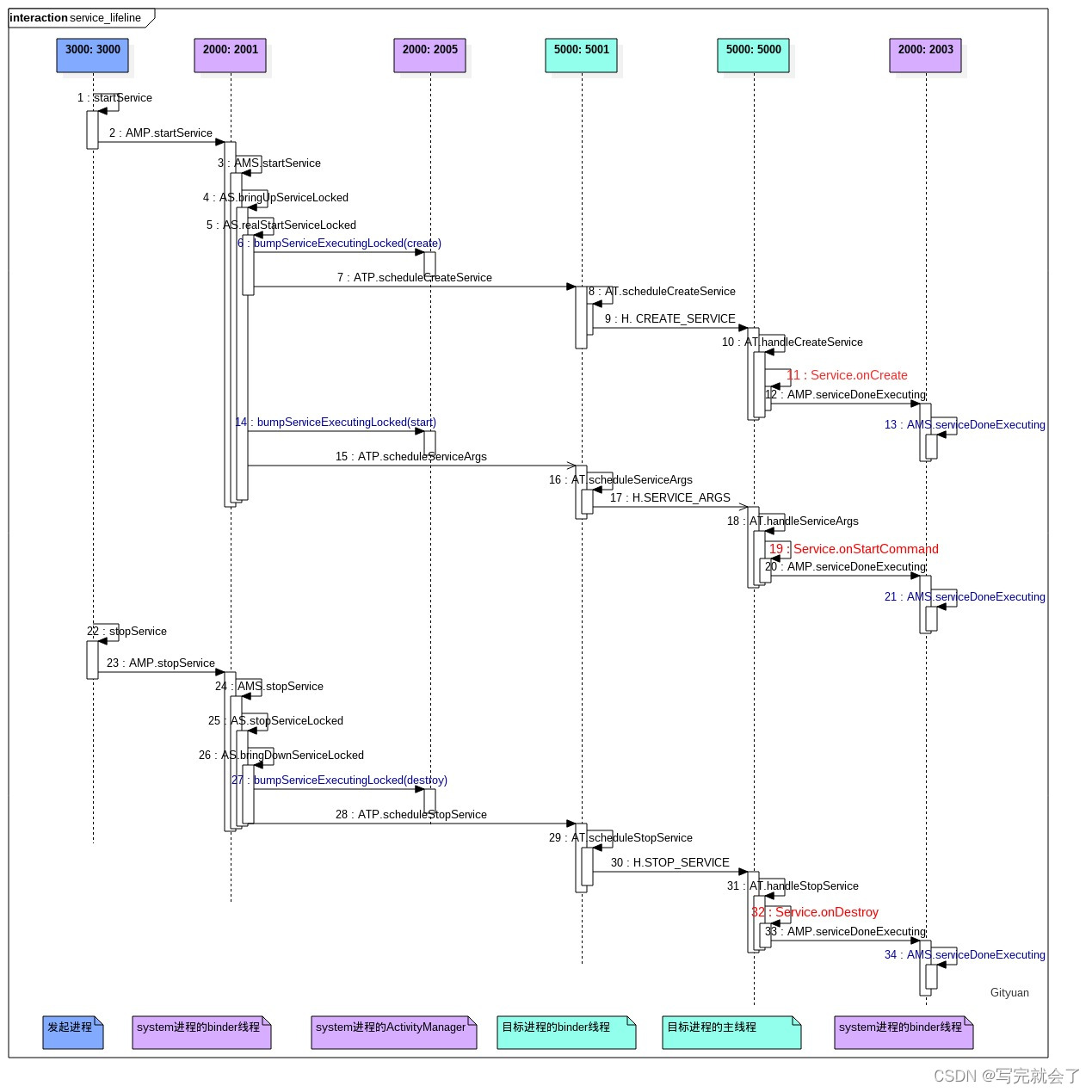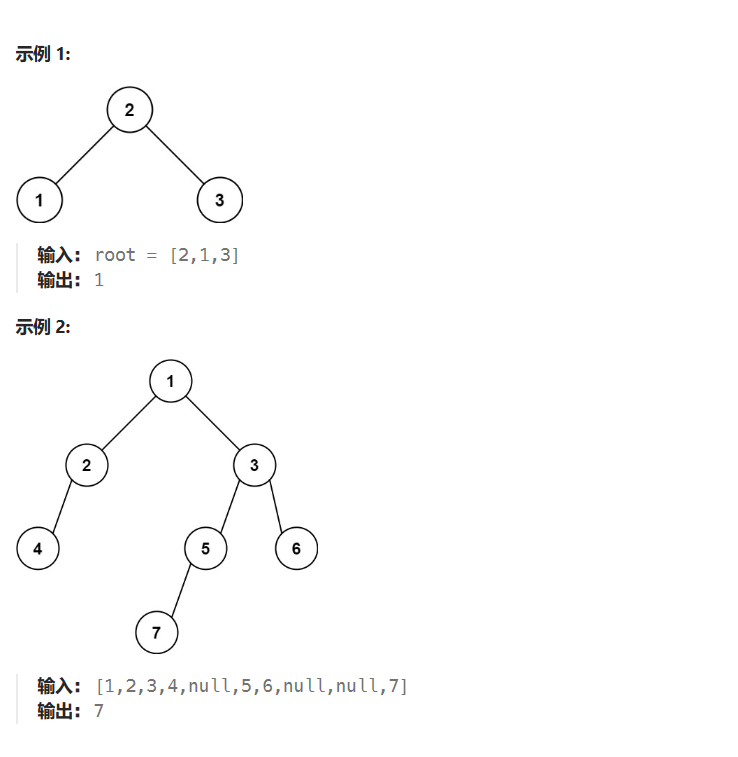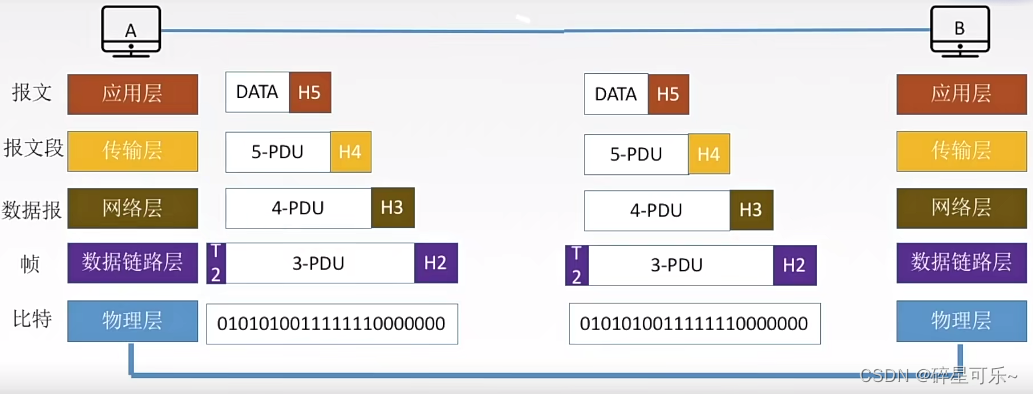目录
前言
服务器程序
服务器程序验证过程
客户端程序
前言

驱动开发暂时告一段落了。后面在研究一下OLED和GPS的驱动开发,并且优化前面已经移植过来的这些驱动,我的理念是在封装个逻辑处理层来处理这些驱动程序。server直接操作逻辑处理层的程序。
这次服务器的开发也不会一步到位,先做最简单的然后在逐渐迭代。
服务器程序
/* * 文件名: server.c * 作者: 辛天宇 * 更新时间: 2024-04-10 * 软件版本号: 0.0.0 */
/**************************************************************
***************************INCLUDE*****************************
**************************************************************/
#include "net.h"
/**************************************************************
****************************LOCAL******************************
**************************************************************/
void cli_data_handle (void *arg);
int main()
{int fd = -1;struct sockaddr_in sin;//创建socket fd*if((fd = socket(AF_INET,SOCK_STREAM, 0)) < 0){perror("socket");//return -1;exit(1);}/*优化4: 允许绑定地址快速重用 */int b_reuse = 1;setsockopt (fd, SOL_SOCKET, SO_REUSEADDR, &b_reuse, sizeof (int));//绑定//填充struct socketddr_in结构体变量bzero(&sin,sizeof(sin));//把sin全填充0sin.sin_family = AF_INET;//地址族网际网区域sin.sin_port = htons(SERV_PORT); //网络字节端口号//优化使server可以绑定在任意IP上
#if 1sin.sin_addr.s_addr = htonl(INADDR_ANY);//INADDY_ANY = -1
#elseif( inet_pton(AF_INET,SERV_IP_ADDR,(void *)&sin.sin_addr) != 1){perror("inet_pton");exit(1); }
#endif//绑定if(bind(fd, (struct sockaddr *)&sin, sizeof(sin)) < 0) {perror("bind");exit(1);}//调用listen()把主动套接字变成被动套接字if(listen(fd,BACKLOG) < 0 ){perror("listen");exit(1);}printf("Server starting...OK!\n");int newfd = -1;//阻塞等待客户端连接
#if 0newfd = accept(fd, NULL, NULL);if(newfd < 0){perror("accept");exit(1);}
#else
//通过程序获取刚建立连接的socket客户端的ip地址和端口号pthread_t tid;struct sockaddr_in cin;socklen_t addrlen = sizeof (cin);while (1) {if ((newfd = accept (fd, (struct sockaddr *) &cin, &addrlen)) < 0) {perror ("accept");exit (1);}char ipv4_addr[16];if (!inet_ntop (AF_INET, (void *) &cin.sin_addr, ipv4_addr, sizeof (cin))) {perror ("inet_ntop");exit (1);}printf ("Clinet(%s:%d) is connected!\n", ipv4_addr, htons (cin.sin_port));pthread_create (&tid, NULL, (void *) cli_data_handle, (void *) &newfd);}close (fd);return 0;
}
#endif
void cli_data_handle (void *arg)
{int newfd = *(int *) arg;printf ("handler thread: newfd =%d\n", newfd);//..和newfd进行数据读写int ret = -1;char buf[BUFSIZ];while (1) {bzero (buf, BUFSIZ);do {ret = read (newfd, buf, BUFSIZ - 1);} while (ret < 0 && EINTR == errno);if (ret < 0) {perror ("read");exit (1);}if (!ret) { //对方已经关闭break;}printf ("Receive data: %s\n", buf);if (!strncasecmp (buf, QUIT_STR, strlen (QUIT_STR))) { //用户输入了quit字符printf ("Client(fd=%d) is exiting!\n", newfd);break;}}close (newfd);}这是以前学网络编程的时候写的拿过来改一改
稍微改一下
/*
*author : xintianyu
*function : main
*data : 2024-4-10
-----------------------
*author : ???
*return : ???
*data : ???
*/
int main(int argc, char *argv[])
{if(ERROR == usage(argc, argv))return 0;tcp_server(argc, argv);return 0;
}/*
*author : xintianyu
*return : err num
*data : 2024-4-10
-----------------------
*author : ???
*return : ???
*data : ???
*/
int usage(int argc, char *argv[])
{ if (argc != 3){ printf("Usage: %s <ip_address> <port>\n", argv[0]); return ERROR; }else{return NOERROR;}
}/*
*author : xintianyu
*return : err num
*data : 2024-4-10
-----------------------
*author : ???
*return : ???
*data : ???
*/
int tcp_server(int argc, char *argv[])
{int server_fd, client_fd; struct sockaddr_in server_addr, client_addr; socklen_t client_len = sizeof(client_addr); char buffer[BUFFER_SIZE]; char *ip_address = argv[1]; int port = atoi(argv[2]); // 创建TCP套接字 if ((server_fd = socket(AF_INET, SOCK_STREAM, 0)) == -1) { perror("socket creation failed"); exit(EXIT_FAILURE); } // 设置服务器地址信息 memset(&server_addr, 0, sizeof(server_addr)); server_addr.sin_family = AF_INET; server_addr.sin_addr.s_addr = inet_addr(ip_address); server_addr.sin_port = htons(port); // 绑定套接字到服务器地址 if (bind(server_fd, (struct sockaddr *)&server_addr, sizeof(server_addr)) < 0) { perror("bind failed"); exit(EXIT_FAILURE); } // 监听套接字 if (listen(server_fd, 5) < 0) { perror("listen failed"); exit(EXIT_FAILURE); } printf("Server listening on %s:%d...\n", ip_address, port); while (1) { // 接受客户端连接 if ((client_fd = accept(server_fd, (struct sockaddr *)&client_addr, &client_len)) < 0) { perror("accept failed"); continue; } // 打印客户端信息 char client_ip[INET_ADDRSTRLEN]; inet_ntop(AF_INET, &client_addr.sin_addr, client_ip, INET_ADDRSTRLEN); printf("Client connected from %s:%d\n", client_ip, ntohs(client_addr.sin_port)); // 接收客户端消息 memset(buffer, 0, BUFFER_SIZE); ssize_t bytes_read = recv(client_fd, buffer, BUFFER_SIZE - 1, 0); if (bytes_read < 0) { perror("recv failed"); close(client_fd); continue; } // 确保消息以换行符结尾,并打印接收到的消息 if (bytes_read > 0 && buffer[bytes_read - 1] != '\n') { buffer[bytes_read] = '\n'; buffer[bytes_read + 1] = '\0'; } printf("Received message: %s", buffer); // 回复客户端消息 strcpy(buffer, "Hello, client!\n"); if (send(client_fd, buffer, strlen(buffer), 0) < 0) { perror("send failed"); } close(client_fd); }close(server_fd);return NOERROR;
}写的比较简单因为没有业务逻辑暂时只是验证通信问题。
服务器程序验证过程
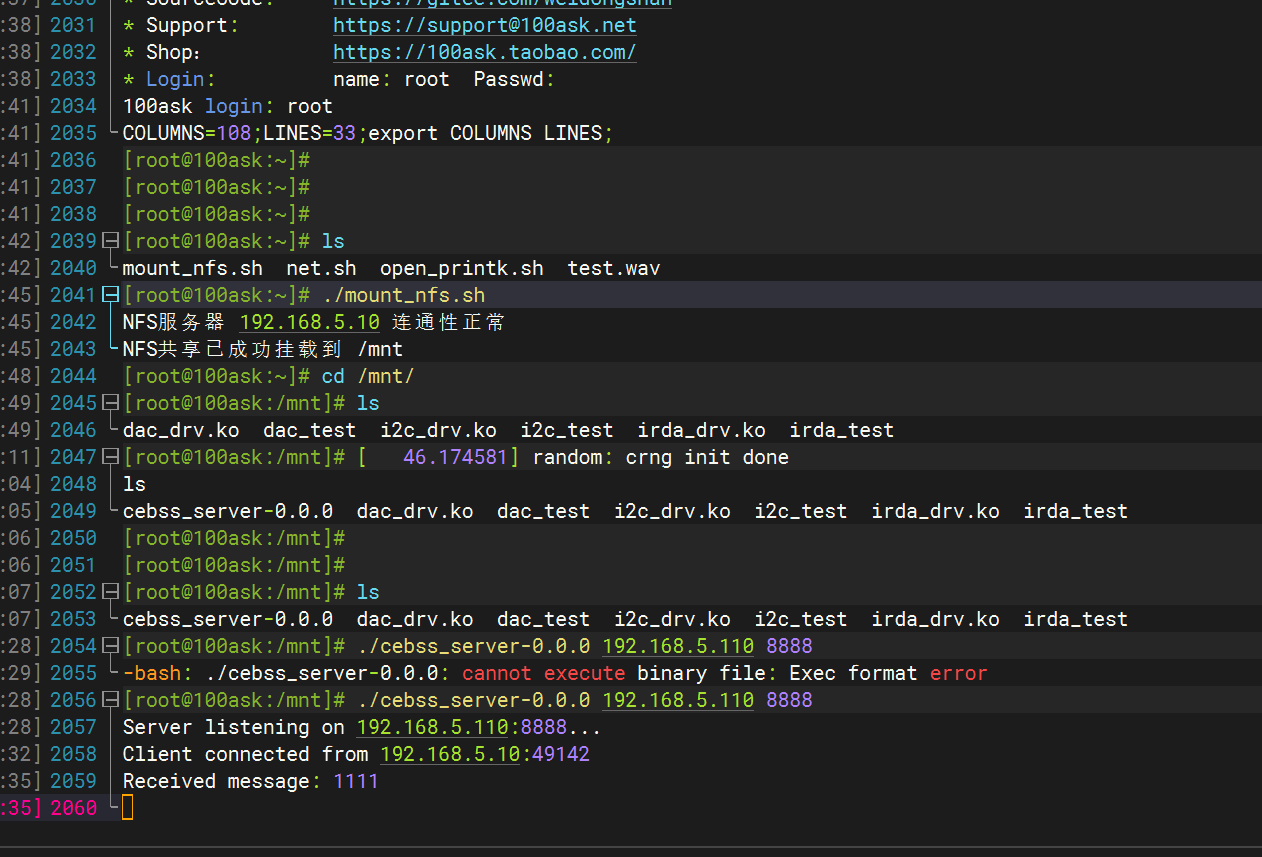

编译命令

这是我们现在的目录结构

客户端程序
import socketserver_ip = '192.168.5.110'
server_port = 8888 # 设置服务器地址和端口
server_address = (server_ip, server_port)
# 创建一个socket对象
client_socket = socket.socket(socket.AF_INET, socket.SOCK_STREAM)
# 连接到服务器
client_socket.connect(server_address)
try: # 发送数据 message = 'Hello, server!'.encode() print(f'Sending {message}') client_socket.sendall(message) # 接收数据 amount_received = 0 amount_expected = len(message) while amount_received < amount_expected: data = client_socket.recv(16) amount_received += len(data) print(f'Received {data}') finally: # 关闭连接 print('Closing socket') client_socket.close()

一下就没了我优化一下让他可以一直通信
import socket server_ip = '192.168.5.110'
server_port = 8888 # 设置服务器地址和端口
server_address = (server_ip, server_port)# 创建一个socket对象
client_socket = socket.socket(socket.AF_INET, socket.SOCK_STREAM) # 连接到服务器
try: client_socket.connect(server_address) print(f'Connected to {server_address}') # 接收用户输入并发送给服务器 while True: try: user_input = input('Enter command (or "exit" to quit): ') if user_input.lower() == 'exit': break client_socket.sendall(user_input.encode()) # 接收服务器的响应 data = client_socket.recv(1024) print(f'Received: {data.decode()}') except KeyboardInterrupt: print('\nKeyboardInterrupt received, exiting...') break except ConnectionResetError: print('\nConnection reset by server, exiting...') break except Exception as e: print(f'An error occurred: {e}, trying to reconnect...') client_socket.close() # Close the socket if there's an error client_socket = socket.socket(socket.AF_INET, socket.SOCK_STREAM) # Create a new one client_socket.connect(server_address) # Reconnect to the server finally: # 关闭连接 print('Closing socket') client_socket.close()

有问题哇,只能发过去第一条
一顿debug发现是服务器的问题,现在算是通讯正常了。
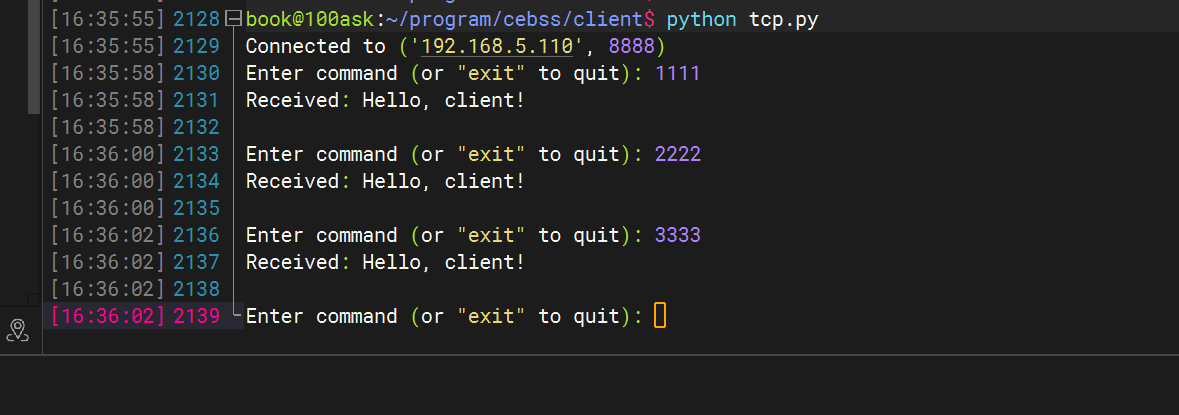
服务器最新程序
int tcp_server(int argc, char *argv[])
{int server_fd, client_fd; struct sockaddr_in server_addr, client_addr; socklen_t client_len = sizeof(client_addr); char buffer[BUFFER_SIZE]; char *ip_address = argv[1]; int port = atoi(argv[2]); // 创建TCP套接字 if ((server_fd = socket(AF_INET, SOCK_STREAM, 0)) == -1) { perror("socket creation failed"); exit(EXIT_FAILURE); } // 设置服务器地址信息 memset(&server_addr, 0, sizeof(server_addr)); server_addr.sin_family = AF_INET; server_addr.sin_addr.s_addr = inet_addr(ip_address); server_addr.sin_port = htons(port); // 绑定套接字到服务器地址 if (bind(server_fd, (struct sockaddr *)&server_addr, sizeof(server_addr)) < 0) { perror("bind failed"); exit(EXIT_FAILURE); } // 监听套接字 if (listen(server_fd, 5) < 0) { perror("listen failed"); exit(EXIT_FAILURE); } printf("Server listening on %s:%d...\n", ip_address, port); // 接受客户端连接 if ((client_fd = accept(server_fd, (struct sockaddr *)&client_addr, &client_len)) < 0) { perror("accept failed"); }while (1) {// 打印客户端信息 char client_ip[INET_ADDRSTRLEN]; inet_ntop(AF_INET, &client_addr.sin_addr, client_ip, INET_ADDRSTRLEN); printf("Client connected from %s:%d\n", client_ip, ntohs(client_addr.sin_port)); // 接收客户端消息 memset(buffer, 0, BUFFER_SIZE); ssize_t bytes_read = recv(client_fd, buffer, BUFFER_SIZE - 1, 0); if (bytes_read < 0) { perror("recv failed"); close(client_fd); continue; } // 确保消息以换行符结尾,并打印接收到的消息 if (bytes_read > 0 && buffer[bytes_read - 1] != '\n') { buffer[bytes_read] = '\n'; buffer[bytes_read + 1] = '\0'; } printf("Received message: %s", buffer); // 回复客户端消息 strcpy(buffer, "Hello, client!\n"); if (send(client_fd, buffer, strlen(buffer), 0) < 0) { perror("send failed"); }}close(client_fd); close(server_fd);return NOERROR;
}